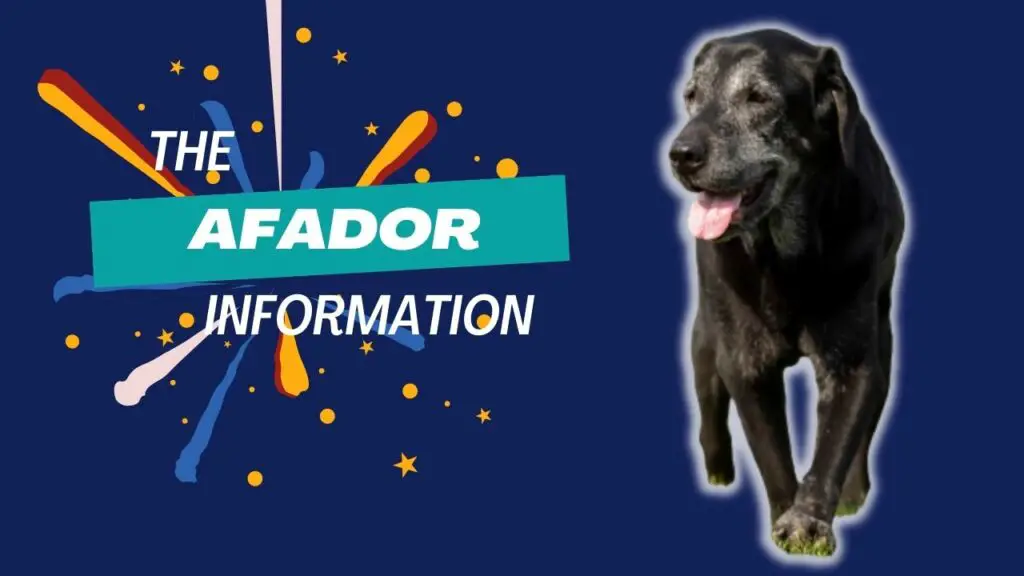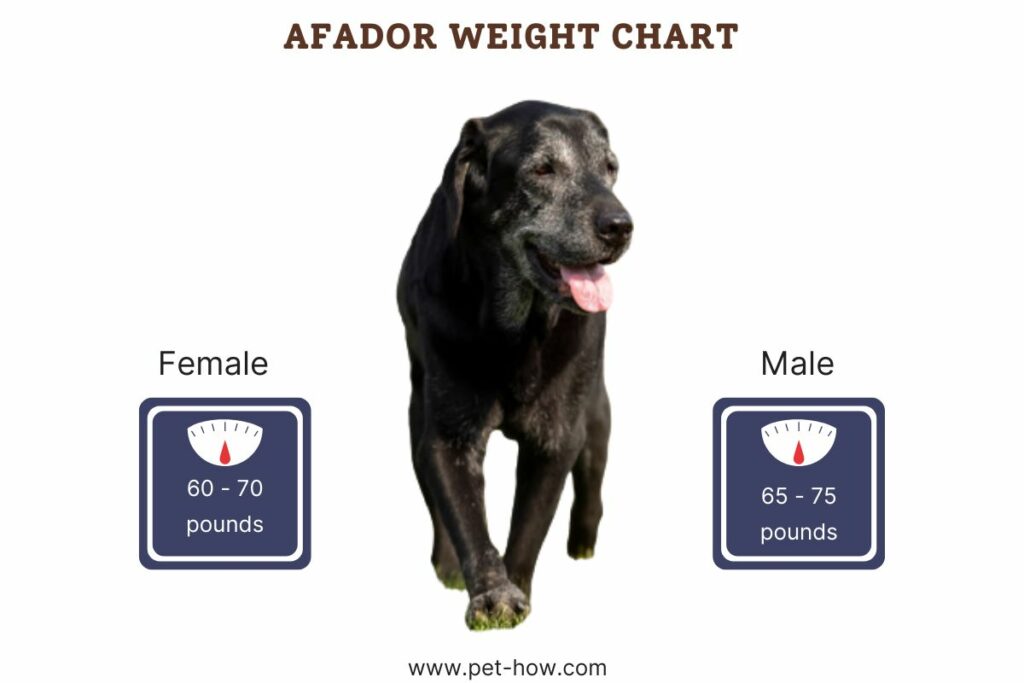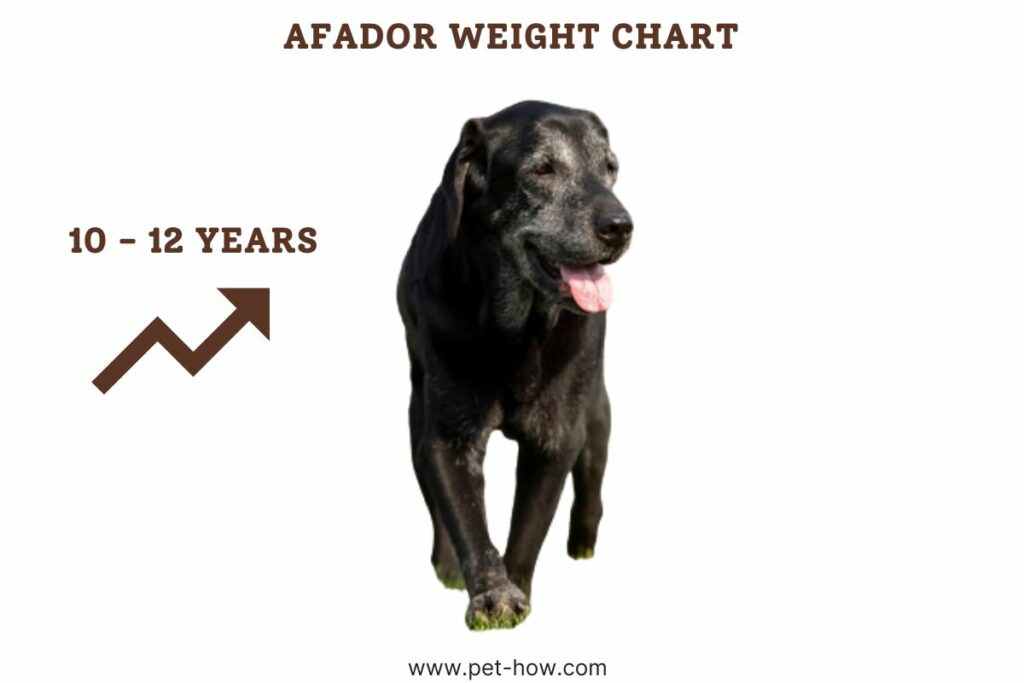Get ready to meet the Afador, a unique and charming crossbreed between the Afghan Hound and the Labrador Retriever.
This breed is known for its playful nature, intelligence, and loyalty, making it an excellent choice for families.
In this guide, we’ll delve into everything you need to know about the Afador, including health considerations, grooming tips, exercise needs, training advice, and nutrition information.
Whether you’re a prospective Afador owner or simply interested in learning more about this fascinating breed, this guide will provide you with the essential knowledge to understand and care for an Afador.
About The Afador Breed

The Afador breed is a hybrid dog that combines traits from the Afghan Hound and Labrador Retriever breeds.
This unique breed was first developed in Alaska around the year 2000 or 2002, according to various sources.
The Afador breed came into existence as an attempt to create a dog that combined the robust energy and friendliness of the Labrador Retriever with the elegance and uniqueness of the Afghan Hound.
Afghan Hounds are one of the oldest dog breeds in history, known for their long silky coats and distinctive looks.
On the other hand, Labrador Retrievers are renowned for their friendly nature, intelligence, and versatility, making them popular family pets across the globe. When combined, these two breeds produce the Afador, a dog that is loyal, energetic, and affectionate.
Despite its unique characteristics, the Afador breed remains relatively rare. It’s essential to remember that each Afador dog may vary in appearance and temperament due to the diverse genetic pool it hails from. Some may inherit more traits from the Labrador side, while others may lean more toward the Afghan side.
While the Afador is not recognized by major kennel clubs due to its status as a crossbreed, they have found a place in the hearts of many dog lovers around the world for their unique blend of traits and their loving nature.
Afador Height

- Male Afadors typically stand taller than females, roughly in the range of 25 to 28 inches at the shoulder.
- Female Afadors, on the other hand, are slightly smaller, usually standing between 23 and 26 inches tall.
Afador Weight

- Male Afadors usually weigh between 65 and 75 pounds, reflecting their combination of the sturdy Labrador build and the leaner Afghan Hound physique.
- Female Afadors tend to be slightly lighter, typically weighing in the range of 60 to 70 pounds.
Afador Life Expectancy

- The life expectancy of an Afador typically ranges from 10 to 12 years.
However, some Afadors have been known to live up to 14 years with proper care and optimal health.
Just like any other breed, an Afador’s lifespan can be influenced by various factors including genetics, diet, exercise, and regular vet check-ups.
Afador Personality Traits
Trainability
Afadors are known for their intelligence, which makes them reasonably trainable. However, they can inherit the independence of the Afghan Hound, which may require a patient and consistent training approach. Positive reinforcement methods work best with this breed.
Energy
These dogs are quite energetic, thanks to the active nature of both parent breeds. They require regular exercise to keep them healthy and happy. A daily walk or play session in a secure area is recommended.
Barking Level
The Afador’s barking level can vary depending on the individual dog. Some may be more vocal, while others may be quieter. Training from a young age can help manage their barking habits.
Mental Stimulation Needs
Being intelligent dogs, Afadors need regular mental stimulation to keep them from getting bored. Puzzle toys, obedience training, and interactive games can help meet this need.
Affectionate with Family
Afadors are known to be quite affectionate with their family. They’re loyal dogs who love spending time with their human companions, making them excellent family pets.
Adapts to Apartment Living
While Afadors can adapt to apartment living, they are active dogs and do require space to move around. Regular exercise is crucial, particularly if living in a smaller space.
Good with Young Children
Generally, Afadors are good with children, especially when properly socialized from a young age. However, due to their size and energy levels, supervision is recommended when they’re around younger kids.
Tolerates Being Alone
Afadors can tolerate being alone for shorter periods, but they prefer the company of their family. Long periods of isolation can lead to boredom and potentially destructive behavior.
Good for First-Time Owners
Afadors can be good for first-time owners, but they do require a commitment to regular exercise and mental stimulation. Their trainability and friendly nature can make the experience rewarding, but patience and consistency are key.
Good with Other Pets
Afadors can get along well with other pets, especially when socialized from a young age. As with any breed, it’s important to make introductions in a controlled and comfortable environment.
Afador Temperature Toleration
- The highest Afador temperature tolerance is considered to be 90°F or 32°C – anything above that is just too dangerous for them.
- Temperatures below freezing point (32°F or 0°C) can be too cold for Afadors, potentially leading to hypothermia if they are exposed for extended periods.
While Afadors do enjoy outdoor activities and can spend considerable time outside during the day, they should have a warm, comfortable place indoors where they can sleep and seek refuge from extreme temperatures.
Afador Physical Traits
Type of Coat
The Afador, a cross between the Afghan Hound and Labrador Retriever, can have a variety of coat types. Some may inherit the long, silky coat of the Afghan Hound, while others may have the shorter, denser coat of the Labrador Retriever. The coat’s color can also vary, with possibilities including black, brown, white, cream, and even brindle.
Shedding
Afadors are moderate shedders. If they have a longer coat like an Afghan Hound, they may shed less, but if they have a dense coat like a Labrador, shedding may be more frequent. Regular brushing can help manage and reduce the amount of hair around your home.
Coat Grooming Frequency
The frequency of coat grooming for an Afador depends on their coat type. If they have a longer, silky coat, they’ll need daily brushing to prevent mats and tangles. If they have a shorter, denser coat, they’ll still benefit from regular brushing, but it may not need to be as frequent.
Drooling Level
Most Afadors don’t tend to drool excessively. However, individual dogs may vary, and factors such as heat, excitement, or certain health issues can cause increased drooling.
Afador Fur Colors
- The Afador, being a mix of Afghan Hound and Labrador Retriever, can exhibit a range of fur colors. The most common colors include black, brown, gray, red, fawn, and occasionally light yellow or cream.
Afador Personality Traits
Watchdog Protective Nature
Afadors, known for their loyalty and protective nature, can make good watchdogs. They are usually alert and aware of their surroundings, ready to protect their home and family if they sense a threat.
Openness to Strangers
Afadors tend to be friendly and sociable dogs, but their reaction to strangers can vary. Some might be more reserved and cautious, while others may be more open and welcoming. Early socialization is key to ensuring they react positively to new people.
Playfulness Level
Afadors are highly energetic and playful dogs. They enjoy various activities such as games, walks, and runs. Their Labrador genes make them particularly fond of playing fetch and other retrieving games.
Adaptability Level
Afadors have a good level of adaptability. They can adjust to different living environments, whether it’s a large house with a yard or an apartment, as long as they get enough physical and mental stimulation.
Intelligence
Afadors are intelligent dogs, inheriting this trait from both their Afghan Hound and Labrador Retriever parents. They are quick learners but can also be independent and stubborn at times, which can sometimes pose a challenge during training.
Tendency to Bark or Howl
While Afadors are not known to be excessive barkers, they may bark or howl to alert their owners of something unusual, or when they are bored or seeking attention. The frequency and volume can vary from dog to dog.
Prey Drive
Afadors may have a moderate to high prey drive, especially if they take after the Afghan Hound parent, which was originally bred for hunting. This may lead them to chase smaller animals, so a secure yard and leash walks are recommended.
Afador Health
Afadors, like any other breed, can be predisposed to certain health conditions. Here are some potential health concerns:
Elbow Dysplasia
Elbow dysplasia is a common condition in larger dog breeds and can occur in Afadors. This condition involves several developmental abnormalities of the elbow joint, leading to pain and limping.
Retinal Dysplasia
Retinal dysplasia is an inherited disorder causing malformation of the retina, which can result in vision impairment. It’s essential to have regular veterinary check-ups to monitor your Afador’s eye health.
Hip Dysplasia
Hip dysplasia is another common condition in larger breeds. It occurs when the hip joint doesn’t develop properly, leading to deterioration and potential loss of function of the joint.
Subaortic Stenosis
Subaortic stenosis is a heart condition that can affect Afadors. It’s a narrowing of the left ventricle outflow tract, which can cause symptoms such as fatigue, weakness, or even sudden death.
Gastric Dilation Volvulus (GDV) or Bloat
GDV is a severe condition where the dog’s stomach fills with gas and can twist. It’s a medical emergency and requires immediate attention.
Afador Exercise Requrements
Afadors are energetic and active dogs that require a significant amount of daily exercise to keep them healthy and happy. Here’s what you need to know about their exercise needs:
- Daily Exercise: Afadors typically need at least 45 to 60 minutes of exercise each day. This can be broken up into multiple walks, play sessions, or other activities throughout the day.
- Types of Exercise: They enjoy a variety of activities, including walks, runs, fetch games, swimming, and even agility training. Anything that allows them to burn off their energy and stimulate their minds will be beneficial.
- Yard Space: If you have a secure yard where your Afador can play, that’s a great way for them to get additional exercise. However, this should not replace structured activities like walks or play sessions with you.
- Puppy Exercise: Afador puppies have lots of energy and will need plenty of playtime. However, their exercise should be carefully managed as their bodies are still growing. Short, frequent bouts of exercise are best for puppies.
Remember, mental stimulation is just as important as physical exercise. Training sessions, puzzle toys, and interactive games can all help to keep an Afador’s mind sharp.
Afador Training Difficulty
Training an Afador can range from moderate to difficult, largely due to their independent and sometimes stubborn nature inherited from the Afghan Hound side of their lineage.
They are intelligent dogs, which means they can learn quickly, but their independence may sometimes translate into a desire to do things their own way, rather than following commands.
Afador Nutrition
Nutrition is a critical part of keeping your Afador healthy and happy. Here are some key points to consider:
- Balanced Diet: Afadors should have a balanced diet that includes proteins, fats, carbohydrates, vitamins, and minerals. High-quality commercial dog food that’s appropriate for their size and activity level can provide this.
- Protein Source: Protein should be the primary component of their diet. Look for foods that list real meat (like chicken, beef, or fish) as the first ingredient.
- Portion Control: Overfeeding can lead to obesity, which can cause numerous health issues. It’s important to stick to the recommended portion sizes based on your dog’s weight, age, and activity level.
- Puppy Nutrition: Afador puppies have different nutritional needs than adults. They require food specifically designed for puppies, which supports their growth and development.
- Treats: Treats can be a great training tool, but they should make up no more than 10% of your dog’s daily caloric intake to prevent weight gain.
- Regular Vet Check-ups: Regular vet check-ups are essential to monitor your Afador’s weight and overall health. Your vet can provide personalized feeding advice based on your dog’s specific needs.
Afador Fun Facts
- The Afador is considered a rare breed. Its unique mix of traits from the Afghan Hound and Labrador Retriever makes it stand out among other breeds.
- The Afador’s personality can vary significantly, reflecting traits from both its parent breeds. Some Afadors may be more reserved like the Afghan Hound, while others may be more outgoing like the Labrador Retriever.
- The Afador is known to be an athletic, loyal, and protective breed, making them excellent guard dogs.
- Afadors are medium-sized dogs. Their physique is similar to the Labrador Retriever, whereas their facial features or head often resemble the Afghan Hound.
- The Afador is a rare mixed breed that originated in Alaska. This hybrid breed is a cross between an Afghan Hound and a Labrador Retriever.
In Conclusion
In conclusion, the Afador, a unique mix of Afghan Hound and Labrador Retriever, is an energetic, loyal, and intelligent breed.
They require a balanced diet to maintain their health and a significant amount of daily exercise due to their high energy levels.
Training an Afador can be moderately challenging due to their independent streak, but with patience and consistency, they can become well-behaved companions.





Leave a Reply